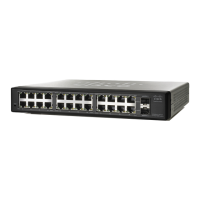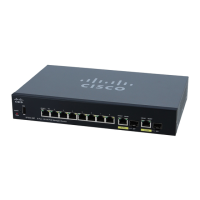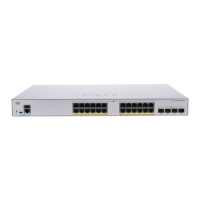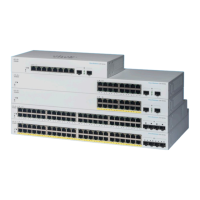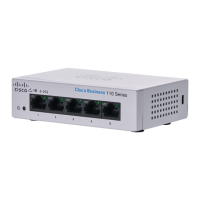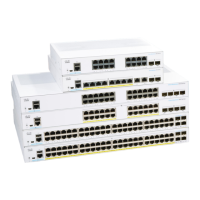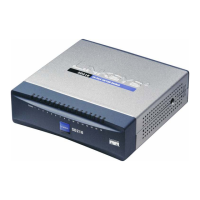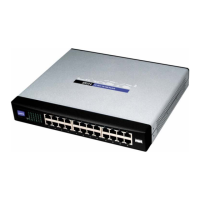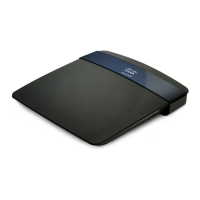Spanning Tree
STP Status and Global Settings
Cisco Small Business 200 Series Smart Switch Administration Guide 199
15
STP Status and Global Settings
The STP Status and Global Settings page contains parameters for enabling STP or RSTP.
Use the STP Interface Settings page and RSTP Interface Settings page to configure ports with these
modes, respectively.
To set the STP status and global settings:
STEP 1 Click Spanning Tree > STP Status & Global Settings.
STEP 2 Enter the parameters.
Global Settings:
• Spanning Tree State—Select to enable on the device.
• STP Loopback Guard—Select to enable Loopback Guard on the device.
• STP Operation Mode—Select an STP mode.
• BPDU Handling—Select how Bridge Protocol Data Unit (BPDU) packets are managed when STP is
disabled on the port or the device. BPDUs are used to transmit spanning tree information.
- Filtering—Filters BPDU packets when Spanning Tree is disabled on an interface.
- Flooding—Floods BPDU packets when Spanning Tree is disabled on an interface.
• Path Cost Default Values—Selects the method used to assign default path costs to the STP ports.
The default path cost assigned to an interface varies according to the selected method.
- Short—Specifies the range 1 through 65,535 for port path costs.
- Long—Specifies the range 1 through 200,000,000 for port path costs.
Bridge Settings:
• Priority—Sets the bridge priority value. After exchanging BPDUs, the device with the lowest priority
becomes the Root Bridge. In the case that all bridges use the same priority, then their MAC addresses
are used to determine the Root Bridge. The bridge priority value is provided in increments of 4096. For
example, 4096, 8192, 12288, and so on.
• Hello Time—Set the interval (in seconds) that a Root Bridge waits between configuration messages.
• Max Age—Set the interval (in seconds) that the device can wait without receiving a configuration
message, before attempting to redefine its own configuration.
• Forward Delay—Set the interval (in seconds) that a bridge remains in a learning state before
forwarding packets. For more information, refer to Spanning Tree Interface Settings.
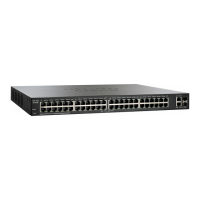
